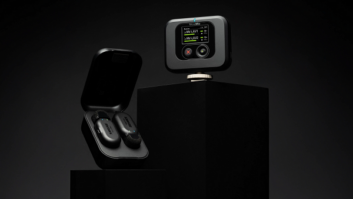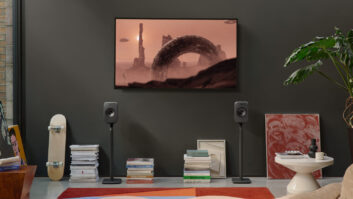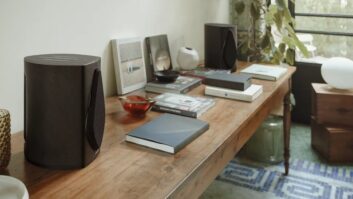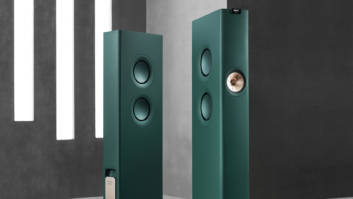San Jose, Calif. — Powered-speaker supplier Audioengine launched a $149-suggested wireless sender/receiver system that lets users transmit music from PCs, iPods, other-brand MP3 players and other audio sources to powered speakers or A/V receivers up to 100 feet away.
The W1 Premium Wireless Adapter package consists of a transmitter and receiver, each about the size of a pack of gum. Because they are USB dongles, they get power from the PC or other USB-connected source or from the company’s USB-equipped powered speakers.
The transmitter and receiver also come with USB AC power adapter to get power when connected to the line-level inputs of A/V receivers, audio systems, powered speakers and the like.
The transmitter uses wireless technology supplied by Avnera to deliver uncompressed music in 48kHz/16-bit PCM form over 2.4GHz spectrum with “no audible or perceived interference” because the technology was designed from the ground up for audio, Avnera claims. The technology is also used in a universal wireless kit for home theater surround speakers, headphones and a wireless USB Internet phone from other companies.
“The features that make this better than most wireless systems currently on the market are the ease of setup, fixed low latency, audio quality, lack of dropouts and high interference tolerance,” said Audioengine director Brady Bargenquast. The AW1 really is a great solution for people wanting to run wireless rear powered speakers, subwoofers or just send music from their computers to stereo systems.”
The two-year-old company has about 80 resellers in the United States and also sells online direct.
To transmit over one of 40 possible 2MHz-wide channels, Avnera-equipped products scan the spectrum when turned on, find a clear channel and stay on it. The technology differs from the adaptive frequency-hopping spread spectrum (AFHSS) technology used in such products as 2.4GHz cordless phones. That technology continuously hops through channels in the 2.4GHz band with a predictable hopping pattern. When it hops into a bad channel, it avoids that channel in the future, but that technology doesn’t work well because it doesn’t stay in a channel long enough to know if there is a problem, Avnera contends.
Also to prevent interference, Avnera uses two separate antenna systems on both the transmit and receive sides and automatically switches between the two to deliver the best signal.
If interference occurs despite these precautions, Avnera uses forward error correction and other techniques to avoid the dropouts and latency problems created by data-oriented technologies such as Wi-Fi and Bluetooth, which resend data packets that are not received.
In lieu of retransmitting lost data into a buffer, Avnera uses two techniques similar to those used in the Redbook-CD standard to prevent audio-signal dropouts: forward error correction and interpolation.













